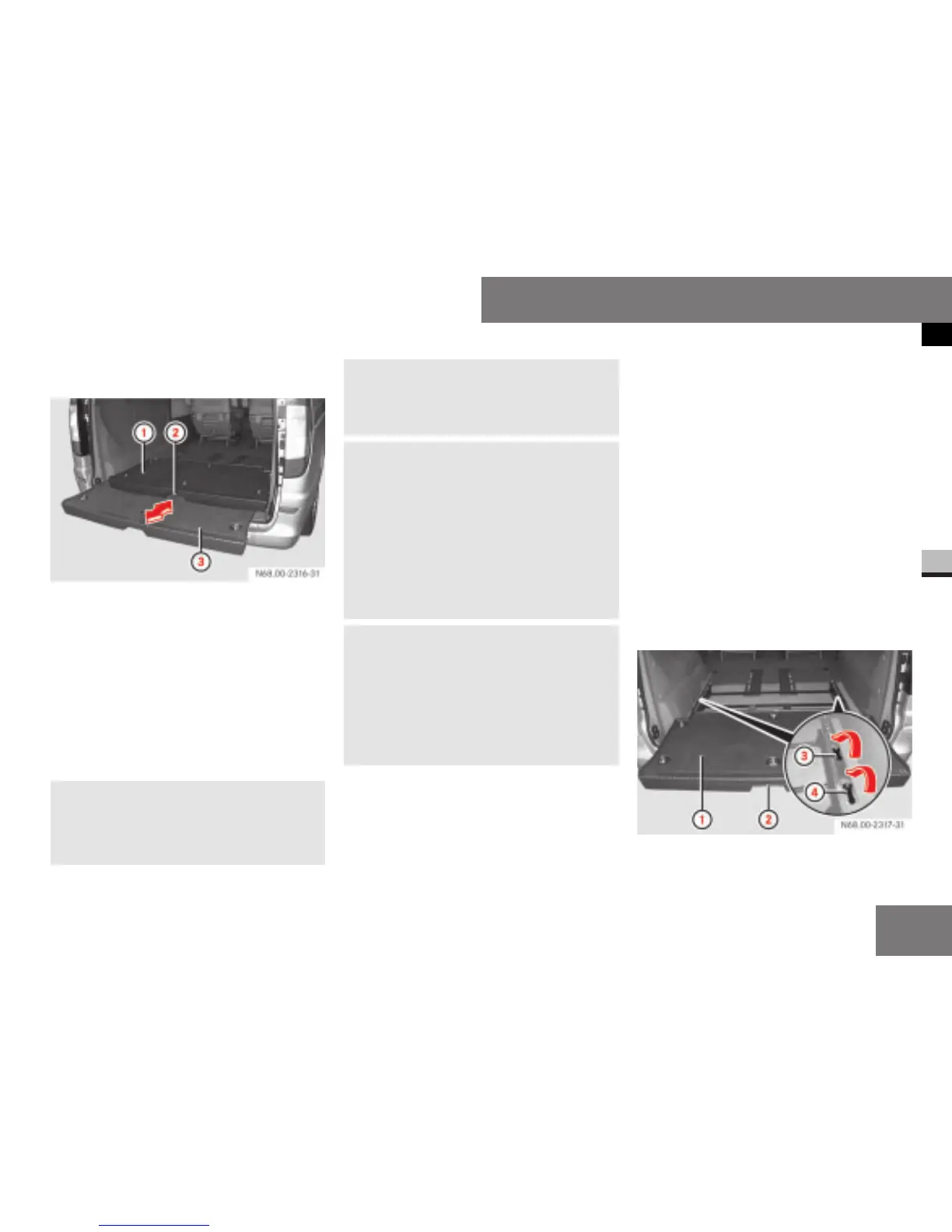Extending and retracting the load com-
partment floor
1 Retracted load compartment floor
2 Locking handle
3 Extended load compartment floor
E Pull and hold locking handle 2.
E Pull or push load compartment floor 1
in the desired direction.
E Release locking handle 2.
E Pull or push locking handle 1 until you
hear it engage.
G
Risk of injury
Do not exceed the maximum permitted load
for the extended load compartment floor.
Doing so could result in damage. A dam-
aged load compartment floor could cause
injury.
Do not drive the vehicle with the load com-
partment floor extended.
G
Risk of injury
When you retract the load compartment
floor, make sure that nobody can become
trapped.
There must be no children or other persons
on the load compartment floor or within its
range of movement when you extend or re-
tract it. They could become trapped during
the closing procedure.
G
Risk of injury
Do not attempt to modify or repair the load
compartment floor, lashing eyelets or the
lashing materials. This could result in the
load working loose inadvertently and there-
fore a risk of damage to the vehicle and/or
serious injury to yourself and others.
! When you retract the load compartment
floor, make sure that there are no objects in
the load compartment floor’s guides or be-
tween the load compartment floor and the rear
seats.
Do not place any objects within the extension
and retraction range of the load compartment
floor. Doing so could damage the load compart-
ment floor.
A maximum load of 250 kg is permitted if the
load is distributed across the entire loading
area. A maximum load of 80 kg on the rear load
compartment lip is permitted in the event of
point loading.
If the load is greater than 120 kg, it will no lon-
ger be possible to extend the load compart-
ment floor (self-locking).
Removing the load compartment floor
i It is easier to remove the load compart-
ment with the help of a second person.
1 Load compartment floor
2 Locking handle
Operation
Transporting loads with the vehicle
227
ee
4
Nur fuer internen Gebrauch

